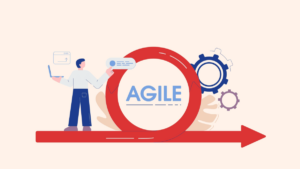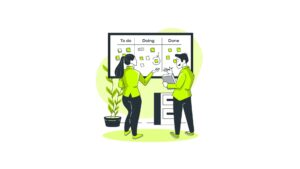Accept Cookies & Privacy Policy?
We use cookies to ensure that we give you the best experience on our website. If you continue to use this site we will assume that you accept and understand our Privacy Policy, and our Terms of Service.
Test automation effort begins with understanding the project requirements and curating a solution based on the requirement.
Test automation processes include test automation planning, tool selection, test environment setup, test data preparation, test script development and maintenance, and test reporting.
A full-range test automation service can help minimize the team effort by automating repetitive tasks, the team can focus on more quality tasks, reduce testing time and economize incurred costs. It can also help reduce manual regression effort and time frame, cutting down the time to market with significant cost savings on a consistent long-term basis. However, a distinct automation strategy with roadmaps is essentially key for determining an effective ROI for the deployed automation initiatives.
Warrants stability and high performance of the software under varying degrees of stresses and environmental overload scenarios.
Includes deployment of
Warrants seamless end-to-end workflows of integrated software with data consistencies.
Assessing the software’s consistent UI and functionality in diverse target environments and scenarios
Assessing the software exposure to security vulnerabilities and its compliance monitoring for relevant regulatory standards (e.g., HIPAA, GAMP, PCI DSS, GDPR, etc.), includes
Analyze software specifics and data characteristics like data volume and the supported data formats to auto-generate test data. Utility packages support generating test data at run time.
On the outlined test automation coverage and scope
A test automation project is estimated taking into account:
Unit Testing: Unit testing involves isolating and testing a single unit of an application from the rest of the software. Unit testing is deployed during the development phase and it is the first level of testing.
Integration Testing: Integration testing validates module communication and interactions, to assess system compliance.
Regression Testing: Regression suites are growing in size, and the variables must be refilled multiple times to ensure that new features do not interfere with older functions. This is easily automated.
Testing of complex functionalities: Tests requiring complex computations are prone to errors, hence it is ideally automated.
Smoke Testing: Deploying automated suites ensures delivery of high-quality functionalities. Assessing whether a build requires more extensive testing.
Data-driven Testing: Deployed on large datasets that require repeated testing as the build progresses.
Performance Testing: tracks the performance of software under various conditions via automation deployments.
Functional Testing: Functional testing must be performed rapidly and offer timely feedback whenever a developer submits a pull request (PR). This is impossible to execute without automation, particularly as the business grows.
Agile methods relies on the efficiency and reliability of test automation in the Software Development Life Cycle. Agile emphasizes the significance of test automation Continuous Integration (CI), Continuous Delivery (CD), Test-Driven Development (TDD), and Behaviour-Driven Development (BDD). Strong test automation procedures also highlight the culture change and value of teamwork that Agile brings.
At Thought Frameworks, our Automation Frameworks are “No record & Playback”, just “Framework” that’s entirely based on reusability.
Our end-to-end Automation services & reporting engine enable you to define and build enterprise automation frameworks that withstand the test of time.
Our approach enhances the software quality and shortens the development life cycle. Our skilled and dedicated resources design and develop automation frameworks. Automation tools are aligned with the testing goals. The Automation frameworks we build to form a solid foundation in combination with specific automation tools to achieve accelerated project goals.
Our team integrates the framework and tools by applying the industry best practices and coding standards to test the software ensuring ease of maintenance.
Linear Scripting Framework: Test scripts are recorded and replayed in a sequential (“linear”) form with little or no changes.
Data-driven Framework: The test scripts to run are determined by a consistent source of test data (internal or external).
Keyword-driven Framework: Tables on a spreadsheet define the behavior of a test script based on a library of functions assigned for a given keyword.
Modular Testing Framework: Individual test scripts are deployed to test individual modules of an application under test, latter combined to form larger test scripts.
Hybrid Testing Framework: A combination of frameworks building to leverage the strengths of each other.
A poorly designed framework might cause problems even if you are using the right automation software tools.
Deficit planning in creating and selecting appropriate frameworks can limit the benefits of automation tests.
A standardized testing protocol for applications specifically designed for handheld devices is called mobile app testing. It is predominantly done to understand user engagement while parallelly checking the app’s quality.
The mobile app hosts three software types: native applications, mobile web apps, and hybrid applications.
This phase involves actual execution of automated tests or integrates the automation framework with CI/CM & build systems such as Maven, Github etc. such that the post-build step kicks off the automated test execution. This phase also involves verifying the reports generated by automated tests, analyzing the failures and logging appropriate failures as defects in the defect tracking system. The test reports generated by automated test and defect reports are then submitted to the client at the end of this phase.
The ability to automate mobile app testing is critical as it allows faster testing and extends its scope of coverage across platforms and test scenarios.
When performed incorrectly, automation can be flaky and time-consuming, making it incompatible for the effort required to set up.
Functional Testing: Deployed often for testing UI elements, modification of screens, fundamental structures, and app functionality. Checks installation and update processes, location settings, compatibility, and accessibility of Application Under Test (AUT).
Interrupt Testing: Interrupt testing is an automation testing procedure that determines the ability of an app to operate further during the simultaneous operation of an application.
Regression Testing: Checks to see if the most recent updates or patches have introduced any new regressions or issues in the mobile app system. Deployed on a continuous basis to ensure that new modifications are feature enhancements rather than pre existing bugs in the application.
| Tool/Technology | Description | Official Link |
|---|---|---|
| Selenium | Open-source tool for web application testing | https://www.selenium.dev/ |
| Appium | Open-source tool for mobile application testing | https://appium.io/ |
| TestComplete | Comprehensive tool for desktop, web, mobile, and cloud application testing | https://smartbear.com/product/test complete/overview/ |
| JMeter | Open-source tool for performance testing | https://jmeter.apache.org/ |
| Cucumber | Behavior-driven development tool for web and mobile application testing | https://cucumber.io/ |
| Jenkins | Open-source automation tool for continuous integration and continuous deployment | https://www.jenkins.io/ |
| Robot Framework | Open-source test automation framework for web and mobile application testing | https://robotframework.org/ |
| Rest Assured | Open-source Java library for RESTful API testing | https://rest-assured.io/ |
| Postman | Comprehensive tool for API testing and development | https://www.postman.com/ |
| Playwright | Open-source test automation framework for web applications | https://playwright.dev/ |
| Cypress | Open-source test automation framework for web applications | https://www.cypress.io/ |
| Applitools | AI-powered visual testing and monitoring platform for web and mobile applications | https://applitools.com/ |

I’ve been in the Agile trenches for years now—coaching teams, facilitating sprints, navigating the choppy waters of transformations that promised the moon but barely delivered a sprint review. If there’s one thing I’ve learned, it’s that Agile is like water—it evolves, it adapts, and sometimes, it drowns you if you’re not prepared.

So picture this: You’re the air traffic controller of a chaotic airport where the planes (developers) don’t always listen, the passengers (stakeholders) want to change destinations mid-flight, and the weather (unforeseen blockers) is always unpredictable.

Imagine a world where testing is no longer a bottleneck. No more endless cycles of manual effort, no more missed defects due to human fatigue, and no more panic at the eleventh hour before a major ERP rollout.

Imagine a world where testing is no longer a bottleneck. No more endless cycles of manual effort, no more missed defects due to human fatigue, and no more panic at the eleventh hour before a major ERP rollout.

Let’s talk about GenAI and testing in 2025—the wild west of technology where machines are not just smart, but scary smart. GenAI (that’s Generative AI for the uninitiated) is running the show everywhere. It’s writing poetry, designing ads, debugging code, and probably plotting to take over my job as I write this blog.

Ah, 2024—you’ve been a year, haven’t you? For us at Thought Frameworks, this year wasn’t just about running the usual QA/QE playbook. Nope, we went full throttle into the future—tinkering, testing, and transforming everything from ERP systems to the ever-evolving world of SAP, GenAI, and security testing.
Accept Cookies & Privacy Policy?
We use cookies to ensure that we give you the best experience on our website. If you continue to use this site we will assume that you accept and understand our Privacy Policy, and our Terms of Service.
| Cookie | Duration | Description |
|---|---|---|
| cookielawinfo-checkbox-analytics | 11 months | This cookie is set by GDPR Cookie Consent plugin. The cookie is used to store the user consent for the cookies in the category "Analytics". |
| cookielawinfo-checkbox-functional | 11 months | The cookie is set by GDPR cookie consent to record the user consent for the cookies in the category "Functional". |
| cookielawinfo-checkbox-necessary | 11 months | This cookie is set by GDPR Cookie Consent plugin. The cookies is used to store the user consent for the cookies in the category "Necessary". |
| cookielawinfo-checkbox-others | 11 months | This cookie is set by GDPR Cookie Consent plugin. The cookie is used to store the user consent for the cookies in the category "Other. |
| cookielawinfo-checkbox-performance | 11 months | This cookie is set by GDPR Cookie Consent plugin. The cookie is used to store the user consent for the cookies in the category "Performance". |
| viewed_cookie_policy | 11 months | The cookie is set by the GDPR Cookie Consent plugin and is used to store whether or not user has consented to the use of cookies. It does not store any personal data. |
Ready for a Quality Software?
Let’s Dig Deep Into Your Thought!